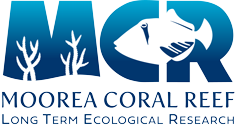Year:
2014
Authors:
Source:
Biology
Abstract:
Coral reefs are among the most diverse ecosystems on the planet and have been compared to rainforests because of their complexity and high species diversity. Tropical reefs have relatively nutrient-poor waters, but they are one of the most productive ecosystems providing benefits and ecosystem services to society in the form of coastal protection, food, and economic resources such as tourism. Rising carbon dioxide emissions by humans will have serious environmental implications for the ocean environment. Coral reef ecosystems are particularly vulnerable to this unprecedented increase of CO2 due to their carbon chemistry and thermal sensitivity. Anthropogenic CO2 is predicted to decrease ocean surface pH by 0.14–0.35 units by 2100 causing ocean acidification (OA). Most studies have focused on how OA will affect rates of calcification of coral reef organisms. However, bioerosion also could be sensitive to rapid changes in ocean carbonate chemistry. I tested the effects of decreased pH on the distribution of bioeroders in the field and on the boring capacity of the mollusk Lithophaga laevigata living within corals, massive Porites spp. (a complex of three species: P. lobata, P. australiensis, and P. lutea) in the lab. Field studies showed higher external bioeroder abundance on coral bommies, and higher internal bioerosion in coral rubble, however, there was no differences in bioerosion between variable pH environments found at upstream and downstream transects. L. laevigata, a boring bivalve, is abundant within massive Porites sp. on the back reef of Moorea, French Polynesia. L. laevigata abundance in massive Porites across the back reef ranged from 3 to 95 ind/m2. Size analysis of L. laevigata showed a significant correlation of the borehole opening and the size of the bivalve, which allowed for a non-destructive method for collection of uniformly sized bivalves as a way to standardize bioerosion rates for analyses. I conducted a month-long mesocosm experiment where massive Porites cores with and without L. laevigata, were incubated in ambient (400 μatm) and elevated (850 μatm) pCO2 treatments held at a constant temperature. Net calcification rates of Porites cores significantly decreased in the elevated treatment. Presence of L. laevigata decreased net calcification rates of Porites regardless of CO2 treatment. I also compared the bioerosion rate of L. laevigata in coral cores (based on changes in buoyant weight) and tested the hypothesis that OA increases the ability of bivalves to bioerode in elevated pCO2 conditions. For this experiment, there was no significant effect of OA on bioerosion rates of L. laevigata. However, respiration rates of L. laevigata increased under elevated pCO2 conditions. These results provide a better understanding of this abundant and active bioeroder under simulated future environmental conditions and give insight to the poorly understood effects of OA on bioerosion.
Volume:
M.Sc.



